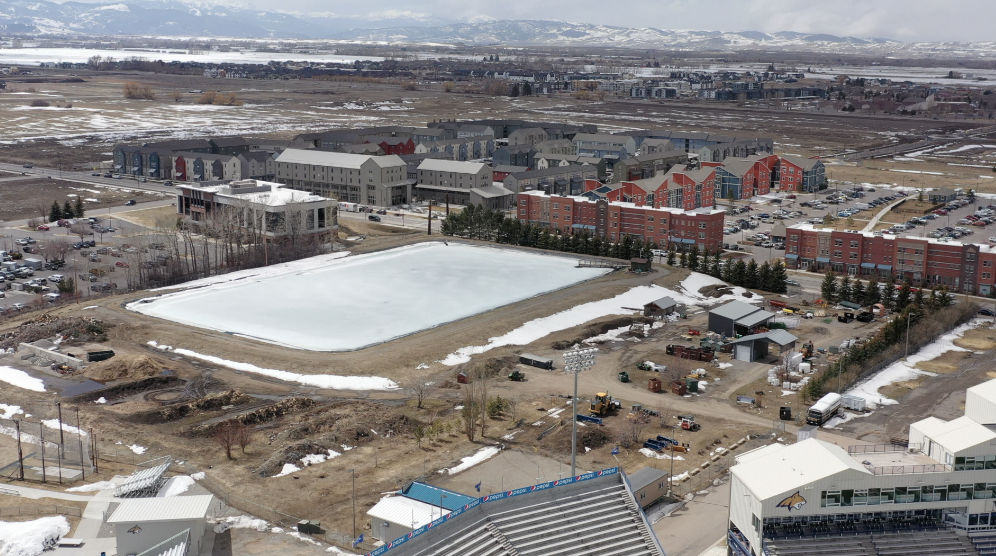BOZEMAN — For most programs across the country, spring ball means warmer temperatures and milder weather.
However, that hasn’t been the case for Montana State this year.
Throughout this spring practice period, where both the number of practices and the time frame of when they can be conducted are regulated by the NCAA, Bobcat Stadium has seen more than two-and-a-half feet of snow brace its field, making the push for an indoor facility even greater.
“Spring ball is used for development, and if you can’t get on a field that’s safe where the conditions are good to be able to train, it does you no good," Bobcats athletic director Leon Costello said.
It’s been almost six years since Montana State released its 20-year master plan to bolster the Bobcats athletic facilities, and with the Bobcat Athletic Complex (BAC) completed in October of 2021, the university is now turning its focus towards an indoor.

“I think when you look across the landscape of FCS football — and even FBS football — if you’re a northern climate school it’s a necessity," Costello stated. "If we want to accomplish the goals that we want to accomplish as a program, it’s a necessity to get this done.”
The department took a small but important step in mid-November getting approval from the Montana State Board of Regents for $1.5 million in design services, which includes hiring an architect, doing feasibility studies, and completing facility drawings.
“We have some preliminary renderings, but once we're able to select an architect to design the facility, we’ll start getting into more of the details," Costello shared.
In the 2017 master plan, the indoor facility was originally pictured across the street from Bobcat Stadium on the western side of Dyche Field, but the university is now exploring a closer option.

“We are looking at different areas on campus – one including staying on the same side of Kagy closer to the retention pond on the west side of the stadium," Costello shared. "The reason really is for player safety so they don’t have to cross Kagy every single time they want to go into that facility, and just sheer proximity to football and track."
In the original proposal, the 'estimated 150,000 to 160,000 square feet' indoor facility would include several amenities:
- A 100-yard synthetic field for training of all field sports
- 300-meter track for indoor training and NCAA competition
- Seating for up to 1,000 spectators
- Locker rooms
- Concessions
- Restrooms

However, the amenities included will be contingent on construction costs and donations received.
“When we design it there will be a base building, which includes the 100 yards of turf, but then if we want to expand, based on donations, we would be able to do that during the design process," Costello explained. "I think really the sky is the limit, but it’s the limit based on fundraising.”
Costello shared that the university is close to hiring an architect, so once the construction documents are finalized by the firm that is ultimately selected, the bid for a contractor will follow.
Once a contractor is hired, that will give the university an idea on how much the indoor facility will cost and the amount that will need to be fundraised.
There is not currently a public campaign for the indoor facility, however, Costello shared the university is doing 'very well fundraising' and will share more details with the community once they have the final documents to start breaking ground.





